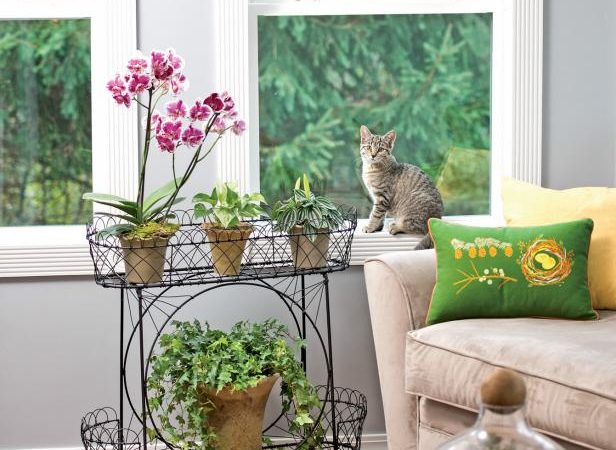Tips for Growing Healthy Houseplants
- February 28, 2024
- Content Admin
- 0 Comments

Houseplants not only add beauty to indoor spaces but also contribute to improved air quality and overall well-being. However, keeping houseplants thriving indoors requires proper care and attention. With the right knowledge and techniques, anyone can cultivate healthy and vibrant houseplants to enhance their living environment. This article offers valuable tips for growing healthy houseplants, covering essential aspects such as lighting, watering, soil, humidity, and pest control. Whether you’re a seasoned plant enthusiast or a beginner, these tips will help you nurture your indoor garden and enjoy the benefits of lush greenery year-round.
Providing Adequate Lighting
Proper lighting is crucial for the health and growth of houseplants, as it directly impacts photosynthesis and overall plant vigor. Assess the lighting conditions in your home and choose plants that are well-suited to the available light levels. Place light-loving plants near south or west-facing windows where they can receive ample sunlight, while low-light plants thrive in north or east-facing windows or areas with indirect sunlight. Rotate your plants regularly to ensure even light exposure and prevent them from leaning or stretching toward the light source. Supplemental artificial lighting, such as grow lights, can be used to provide additional illumination for plants in areas with insufficient natural light.
Watering Wisely
Proper watering is essential for preventing both underwatering and overwatering, which can lead to root rot and other issues. The frequency of watering depends on factors such as plant species, pot size, soil type, and environmental conditions. Before watering, check the moisture level of the soil by inserting your finger into the soil up to the first knuckle. If the soil feels dry, it’s time to water, but if it’s still moist, wait a few more days before watering again. Use room-temperature water and water the plant thoroughly until excess water drains out of the bottom of the pot, ensuring that the roots receive adequate hydration.
Choosing the Right Soil
Choosing the right soil is essential for providing houseplants with the necessary nutrients and proper drainage. Opt for a well-draining potting mix specifically formulated for indoor plants, as garden soil may compact over time and hinder root growth. Look for mixes that contain a combination of organic matter, such as peat moss or compost, and inorganic materials like perlite or vermiculite to promote aeration and moisture retention. Repot your houseplants as needed to refresh the soil and prevent nutrient depletion, typically every one to two years or when the plant outgrows its current container.
Managing Humidity Levels
Maintaining adequate humidity levels is crucial for houseplants, especially in environments with dry indoor air. Many common houseplants are native to tropical or subtropical regions and thrive in high humidity. To increase humidity around your plants, place a shallow tray filled with water and pebbles near the plants or use a humidifier to add moisture to the air. Grouping plants together can also help create a microclimate with higher humidity levels. Monitor humidity levels regularly and adjust your efforts accordingly to ensure that your houseplants remain healthy and vibrant.
Preventing and Managing Pests
Pests such as aphids, mealybugs, spider mites, and fungus gnats can wreak havoc on houseplants if left unchecked. Regularly inspect your plants for signs of pests, including yellowing leaves, sticky residue, webbing, or tiny insects on the foliage. If you detect a pest infestation, isolate the affected plant to prevent the pests from spreading to other plants. Depending on the severity of the infestation, you can use various methods to control pests, including insecticidal soap, neem oil, or natural predators such as ladybugs. Maintaining good hygiene practices, such as removing dead leaves and debris, can also help prevent pest problems and promote overall plant health.
In conclusion, growing healthy houseplants requires attention to detail and a willingness to meet the needs of each plant. By providing adequate lighting, watering wisely, choosing the right soil, managing humidity levels, and preventing and managing pests, you can create an optimal environment for your indoor garden to thrive. With patience and consistent care, you’ll be rewarded with lush, vibrant plants that not only beautify your home but also contribute to a healthier and more enjoyable living space.
